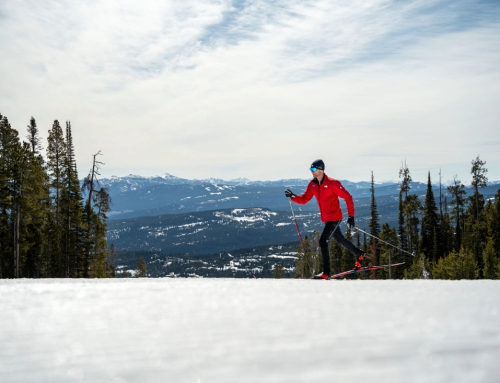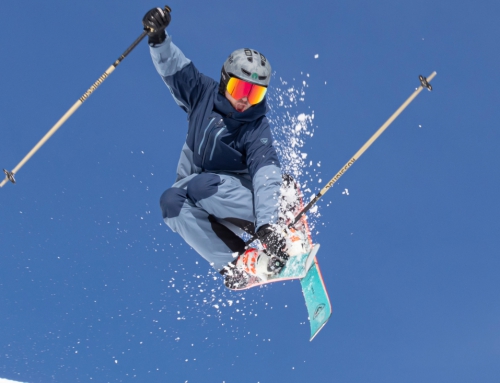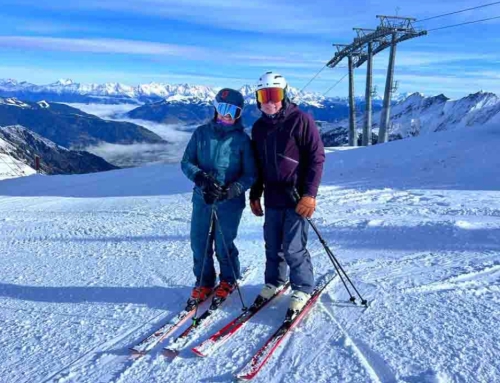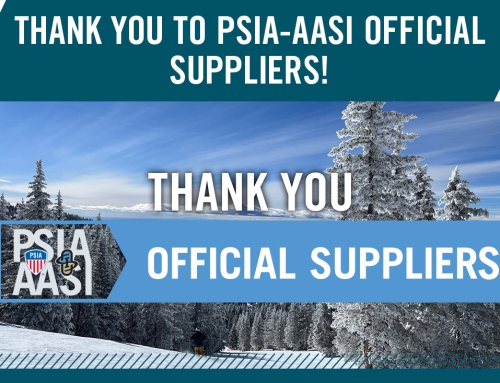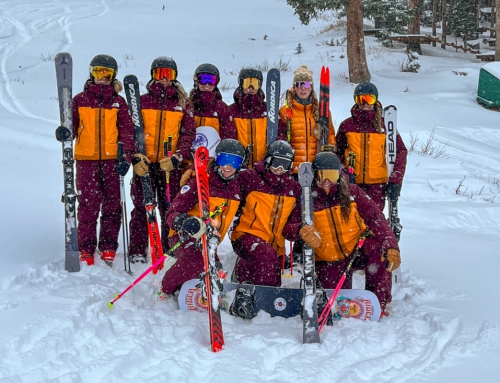Chasing Winter with PSIA Examiner Francesca Pavillard-Cain
In the latest edition of “Chasing Winter,” a guide to teaching skiing and snowboarding in the Southern Hemisphere from the professional instructors who actually do it, Francesca Pavillard-Cain, a PSIA Freestyle, Alpine, and Telemark examiner, talks about her love for spending her “summers” instructing in Treble Cone, New Zealand. For additional perspective on teaching in the Southern Hemisphere, check out posts on AASI Snowboard Team Development Coach Tony Macri and PSIA Alpine Team Technical Coach Michael Rogan.
Q: How’d you get started teaching in “the summer?”
A: Part of the reason I started pursuing my Level III certification was to teach in more places internationally. My goal has always been to use my ski career to travel, explore cool places, and continue developing as a professional. The two best ways to accelerate that process are to work year-round and to learn from a variety of skiers, associations, and companies. My first southern winter was in Portillo, as (PSIA Alpine Team member) Katie White encouraged me to work there. That was in 2018. I started working in New Zealand the following season, in 2019, where I met my husband, and it’s now our second home!
Q: Had you traveled to ski and teach before this?
A: Yes, my father is Swiss, so I have experience teaching skiing in Switzerland. I was also a competitive freeride skier, which allowed me to compete globally. This also provided opportunities to take avalanche courses and other educational courses whenever they came up.
Q: What were your first impressions – and highlights or challenges – of teaching in July and August?
A: I love skiing and the different opportunities it’s given me. Most aspects of an endless winter are fantastic – meeting amazing people, tackling great terrain, and having ample time to train and work. Even when conditions aren’t ideal, I know good days are ahead, and less-than-perfect snow just means good training or a chance to rest.
That said, the first few years of a southern winter can be financially challenging. I’ve had incredible opportunities and a bunch of luck, which have allowed me to make money. However, I always caution people to expect to break even initially and to capitalize on busy periods, as slow times can be tough for new instructors without an established client base.
Burnout is another factor. Year-round skiing can lead to moments of demotivation, where even a few uninspiring days on the slopes can make you feel disconnected from the sport you love. When that happens, It helps to change things up – whether by taking a few days off or switching equipment to make things feel fresh again.
On the bright side, experiencing two springs is fantastic. Longer days, skiing in slushy conditions, and enjoying warm weather are great. Transitioning from longer spring days to short days again can be tough, but it’s well worth it for the next round of winter.
Q: Now that you’ve been doing it for a couple years, what does a “typical” season look like?
A: I finish up work in the Big Sky area in May, get our house in Montana ready to rent, and head out to New Zealand as soon as possible. Work starts to pick up once the resorts begin opening in mid-June. We have our New Zealand Snowsports Instructor’s Alliance (NZSIA) examiner training, and I usually start coaching local freeride athletes. This period involves instructor training and preparing new hires for the season. Business in the ski school doesn’t really pick up until the July school holidays, when the mountain becomes packed.
During the Southern Hemisphere winter, I mix work activities – coaching competitive local athletes, conducting instructor training and examining, and helping out in the ski school. The season begins to wrap up in October, but the mountain often extends its closing, allowing us to ski well into the month. By then, the days are getting longer, and the skiing is incredibly fun. It’s usually when I have worked enough to afford some personal skiing time, enjoying those spring laps.
My husband and I have a tiny house in Montana, so we return to the property to enjoy some fall weather, spend time with family and our dogs, and allow my husband to hunt. This gives us about a month and a half off skis to relax and reset. Now that the tiny house is built, we plan to use some of that time for a beach vacation, perhaps in Bali or Indonesia!
Q: Who else are you working with in terms of other instructors and who are your guests?
A: New Zealand offers a very international work environment, creating an inspirational mix of skiers with diverse certifications and philosophies. Over the past few years, we’ve enjoyed our own mini-Interski at TC (Treble Cone), where trainers from different countries host clinics for fellow instructors. It’s incredibly fun and educational! I’m always amazed at the talent across various schools in New Zealand, including demo team members, guides, ex-professional skiers and riders, ski school directors, ski school owners, the list goes on and on.
Our client base is also quite diverse and varies depending on school holidays. We regularly see local school groups and athletes, as well as NZ holiday goers. Additionally, we have a large number of Australian visitors and a significant contingent of Chinese and Japanese clients. Like most ski schools, the majority of our lessons are beginners, but the Southern Hemisphere environment fosters a unique setting for high-performance athletes coming to train. We also see a lot of instructor training and various ski associations, including NZSIA and PSIA-AASI, running courses and exams.
Q: What are living conditions like? Food? Pay? Days off?
A: Living in New Zealand is beautiful, with amazing scenery, and the rentals, if you can find one, tend to be very nice. Although finding a rental can be challenging, I’m always impressed with how well Cardrona/TC takes care of their new hires and helps them find accommodation.
As an island nation, New Zealand can be expensive, with high costs for rent, food, drinks, and exploring. However, the favorable exchange rate for the U.S. dollar can help stretch your money further. Instructors typically make a base rate in the higher $20s, around $27 an hour, with higher rates for teaching and even higher rates for requests.
If you’re eager to work, there are usually opportunities available, whether it’s putting up fences or meet-and-greets. However, if you’re willing to backline, you might find yourself without work for extended periods, so it’s good to take on work during busy times. Sponsored visa holders are expected to work a certain number of hours and should be ready to work full-time hours each week.
The more years you work, the more clients you build, and the more profitable it becomes. However, as a first-year instructor, be prepared to work hard, knowing that breaking even is normal.
Q: Are you at the mountain all season or do you get days off? Are there other places to travel?
A: There are definitely days off. During busy seasons, some people might only take one day off a week, but generally, they manage to get everyone their two days off each week. As in any ski school there are ideal times for taking days off, and it’s advisable to avoid holiday periods for time off. Cardrona/TC is part of RealNZ, a larger company offering incredible adventures throughout New Zealand, such as jet boating, steamships, cruises in the sounds, and more. All employees enjoy discounts or even complimentary activities. I encourage anyone visiting to plan for day trips and exploration and consider extending their stay beyond the resort’s closing for additional travel opportunities.
Q: How and why could other instructors do this?
A: I encourage anyone eager to extend their winters to take advantage of more time on snow, gain diverse perspectives, and travel the world. This experience can significantly broaden your understanding of industry possibilities and accelerate your training and certification goals. Moreover, it’s an excellent opportunity to network and meet some truly amazing people.
New Zealand offers various visa options, including the working holiday visa, which allows individuals to secure their own visa. There are also sponsored visa options depending on your experience and certification.


